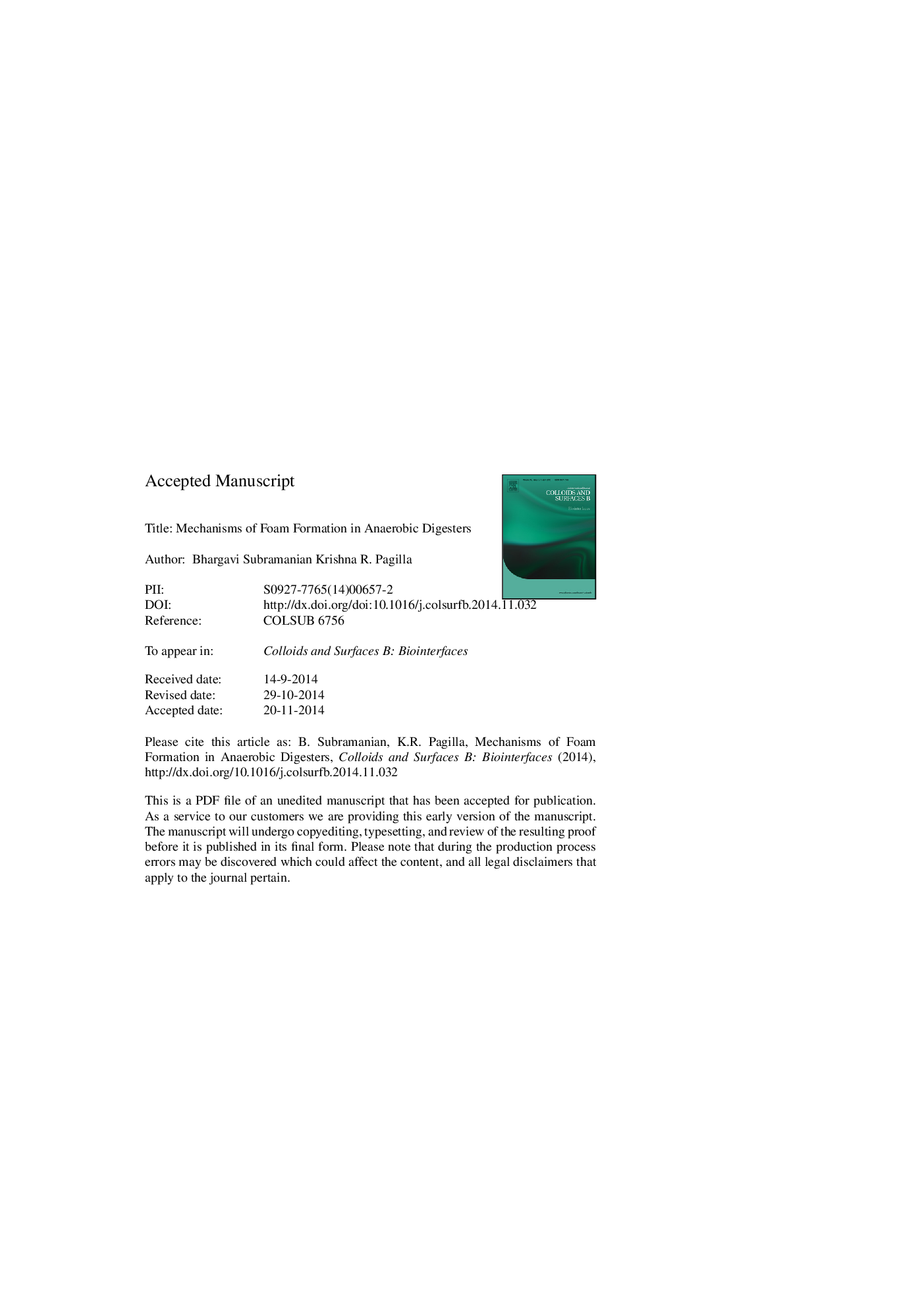| Article ID | Journal | Published Year | Pages | File Type |
|---|---|---|---|---|
| 6982313 | Colloids and Surfaces B: Biointerfaces | 2015 | 49 Pages |
Abstract
An anaerobic digester (AD) is the most essential step to generate energy in the form of biogas from waste. AD foaming is widespread and leads to deterioration of the AD process and operation. In extreme conditions, AD foaming poses a significant safety risk and considerable economic impacts. It is, therefore, necessary to understand the fundamentals of AD foaming to develop effective strategies that can help minimize the foaming impacts. Several aspects of AD foaming have attracted considerable research attention, however, the focused has been mainly on site specific causes and prevention. Here, the available three-phase foam literature is reviewed with an emphasis on the fundamental aspects of bubble formation in AD: similarities between AD foams and other “desirable” foams, surface rheology, physico-chemical aspects of carbon dioxide (CO2) in digesters, dynamics of the gas-phase, pH, alkalinity and certain relationships between these factors are discussed. All of the abovementioned fundamental aspects seem to be involved in AD foam formation. However, the detailed relationship between these uncontrolled and controlled factors, foam formation and its implications for process and operation of AD is still inconclusive.
Keywords
Related Topics
Physical Sciences and Engineering
Chemical Engineering
Colloid and Surface Chemistry
Authors
Bhargavi Subramanian, Krishna R. Pagilla,
